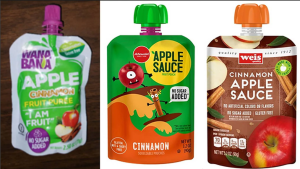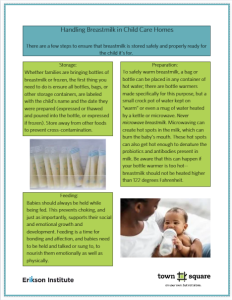Sometimes, if we take a moment to pause and look around (yes, it is hard to do!)…we can really see what is around us. We may realize that many of the answers to questions we ask are already there for us, just waiting to be discovered.
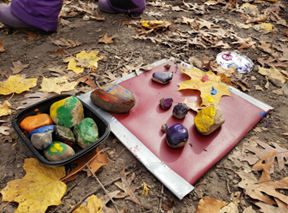 As early childhood educators and professionals, this pause may be through the process of asking a question in a new way, looking for a different outcome, truly seeing with new understanding. Or it may be a stepping stone for something we already know, but takes us into an unexplored direction.
As early childhood educators and professionals, this pause may be through the process of asking a question in a new way, looking for a different outcome, truly seeing with new understanding. Or it may be a stepping stone for something we already know, but takes us into an unexplored direction.
The journey of outdoor learning is like that.
For those that are already on this path, you know. For those curious and wanting to learn more, I invite you to read on.
Every outdoor environment has something to offer. Something to discover. Something new that can enrich our lives. It can transform the way in which children interact with the world. Our world. Their world.
The research is abundant and clear regarding the many benefits of children’s outdoor learning and nature play.
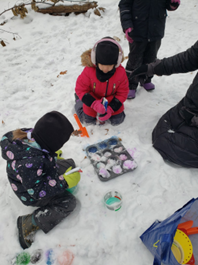 So, whether you have extensive or minimal outdoor time at your center, whether you have a forested area, a field, an open lot, or a small space or even just a few trees in which to explore, nature learning CAN happen. But, I stress that it be explored with that curious mindset. If you are thinking of all of the barriers that may stop you from implementing outdoor experiences for your children, you are not alone. But this is so new, so different! I have so much built into what I already know and do! This is too much work! Change IS hard, but as you read on for practical tools and ideas to integrate more nature into your day, you will find it is not only doable, but full of unexpected gifts. Getting Started Teaching Outside from Get toGreen through Fairfax County schools provides straightforward tips.
So, whether you have extensive or minimal outdoor time at your center, whether you have a forested area, a field, an open lot, or a small space or even just a few trees in which to explore, nature learning CAN happen. But, I stress that it be explored with that curious mindset. If you are thinking of all of the barriers that may stop you from implementing outdoor experiences for your children, you are not alone. But this is so new, so different! I have so much built into what I already know and do! This is too much work! Change IS hard, but as you read on for practical tools and ideas to integrate more nature into your day, you will find it is not only doable, but full of unexpected gifts. Getting Started Teaching Outside from Get toGreen through Fairfax County schools provides straightforward tips.
The North American Association for Environmental Education (naaee) offers three categories to plan for and organize outdoor learning experiences; TEACHING, SAFETY and the ENVIRONMENT.
When we are spending time outside with children, we can learn from both the space and the place. Learning outdoors (simply being outside!) is also a stand-alone benefit to whole-child development…simply being outside is good for children and schools.
- What do I teach?Natural Start: The Teaching and Tinkergarten: Tinkergarten outdoor learning ideas
- It seems so risky! Natural Start: The Safety
- Where? Natural Start: The Environment
Practical tips for clothing and snack time:
Sometimes starting small is best. A new nature walk routine with prompts such as “Tell me more about what you notice” and “Can you say more about that?” Or integrating a math focus such as “Nature explorers, today we are going to notice the nature around us in groups of three” may be one of the most important changes you make this year.
Sometimes re-thinking a routine typically done indoors and/or on a screen and bringing it outside, is best. Read-alouds, journaling, and songs may now take place on foam sit-upons or a tarp. Some extra minutes teaching and practicing outdoor learning routines are well worth the time.
Sometimes planning with your teaching team and doing your own adult nature-scavenger hunts, and surveying the areas for safe and creative play, is what is best.
Nature is joyful. Nature is powerful. Nature is an incredible teacher. I invite you to take the small steps or giant leaps needed in order to provide critically important outdoor experiences for our children. Working as a teacher and coach in countless spaces and places for over twenty years, I can truly say that what nature as a teacher gifts to us, is incomparable.
So, slow down, look around, and ask those questions that nature has been waiting for us to ask.
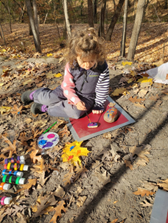 “If we truly want to make nature-based education meaningful and accessible for all children and families, we must strive to approach education in the context of not just the class, or the forest, but the place, this entire remarkable world of which we are all a part.” – Kit Harrington
“If we truly want to make nature-based education meaningful and accessible for all children and families, we must strive to approach education in the context of not just the class, or the forest, but the place, this entire remarkable world of which we are all a part.” – Kit Harrington
As the weather warms up, it’s important to be aware of how to keep children (and ourselves!) safe in heat and humidity. When the heat index (“feels like”) is over 90° F, children are particularly vulnerable to heat-related conditions.
This chart from the National Weather Service shows both how the heat index is calculated, and when temperatures become hazardous.
Some Ways to Keep Children Safe in Heat (tips from the CDC and HealthyChildren.org):
- Move outdoor time to early in the day, before the sun is high.
- Apply and re-apply sunscreen– sunburn can cause dehydration and prevent the body from regulating temperature appropriately. Sunscreen is important for people of all ethnicities and skin tones.
- Have drinking water accessible at all times, and encourage (and model!) frequent water breaks.
- Recommend that families dress in loose, lightweight, and light-colored clothing. Use UV protective clothing and sun hats for extra safety.
- Keep cool with safe water play. A sprinkler, misting bottles, or water table can all help regulate body temperature and keep everyone in a good mood.
- Know the signs of heat-related illness and be prepared to act accordingly.
Handling, storing, heating, and feeding breastmilk can feel like it has a lot of steps.
This printable PDF reviews how to safely provide breastmilk to infants whose families provide it, including storage, preparation, and feeding. Below, you’ll also find a video from Head Start showing an Early Head Start teacher bottle feeding an infant and demonstrating responsive feeding and interaction with a baby at feeding time.
Gestión de la leche materna en cuidado de los niños
What do you notice in this video of the Early Head Start teacher feeding the baby? How does the baby respond to her actions and speech?
In the Paths to Quality Standards for Participation, there are 13 standards that family child care providers must meet to move from level 1 to level 2. One practice states:
Each child feels safe, accepted, and protected. This is supported by daily practices that reinforce respect for people, feelings, ideas, and materials.
What does it mean to feel safe, accepted, and protected? What are daily practices that support children in feeling this way? Paying attention to each child and taking advantage of time to connect, even though this is difficult in group care, is a great start. Especially during caregiving times like feeding and diapering/toileting when children are at their most vulnerable. In the RIE philosophy of infant caregiving, this is called “want something quality time.” When the adult has a goal, but it can be accomplished mutually with the child’s cooperation, and the time can be spent in a pleasant interaction with the child rather than rushed through.
This is in addition to “want nothing quality time,” when adults spend time playing with, talking to, and observing children without another agenda. Helping children feel safe also involves self-reflection. Knowing how to handle children’s challenging behaviors is an ongoing process and requires some self-reflection to ensure that adult responses are compassionate and appropriate and demonstrate to the child that the adult isn’t a threat. It’s easy to forget that adults are many times the size of a young child and can easily feel frightening to them. As Circle of Security says, the adult must choose to be “bigger, stronger, wiser, and kind.”
Respect for ideas is simply listening to children and helping them have discussions together in a way that allows for free expression of thoughts without ridicule.
Respect for materials might be more complicated. One of the greatest frustrations in family child care can be broken materials! But daily practices that can support respect for materials might include helping children choose the right materials for their chosen activity (throwing sponge balls instead of blocks), and teaching and modeling appropriate use of materials such as paintbrushes and markers.
Reflection:
- How can you tell when a child is feeling safe?
- What frequent occurrence is most likely to dysregulate you? Spilled paint? Children squealing? How can you proactively support your own wellness and calm?
This printable PDF from the CDC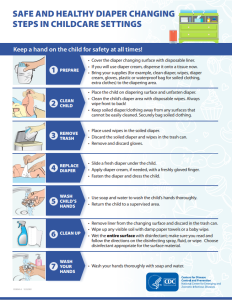
outlines the steps involved for a diaper change that minimizes the chance of spreading pathogens such as pinworms or hand foot and mouth. These are crucial to the health and safety of the provider and all of the children they care for.
What it doesn’t show is the incredible opportunity for relationship building that is also present at every diaper change. How often are you just a foot or so away from the child’s face for such a focused time? Spending diaper changes talking to the child is one high-impact way to build relationships, and also make the diaper changes themselves easier. What toddler is going to try to roll or wrestle away when one of their favorite people is talking to them, or playing “this little piggy” with their toes?
It doesn’t add a significant amount of time to really pay attention to the child being changed, but the payoff in peaceful diapering and overall relationship can’t be overstated!
The winter season brings with it added hazards. Child care providers can take steps to keep children safe from winter hazards.
Children need extra protection from cold weather as they are not able to regulate their body temperature. It’s vital that children wear appropriate clothing for the weather.
- Wear layers of loose-fitting, lightweight clothing
- Wear a hat, coat, and gloves/mittens
- Caregivers should check children’s extremities for normal color and warmth at least every 15 minutes
This infographic created by the National Weather Service serves as a great tool to help guide what clothing is needed in the cold weather.
A safe environment that promotes health is the baseline expectation for a child care home. There are many policies and procedures to ensure that you, your family, and the children you care for remain healthy and safe year-round.
This webinar discusses how providers can work to support all children in becoming empathetic community members.
Consider: How do the principles of safety needs and growing needs influence how you plan your program? How can you prioritize building secure attachment with the children in your program?
Keeping the children in your care safe is a constant concern. The Head Start Early Childhood Learning and Knowledge Center has created a tip sheet for families about safety and injury prevention for young children that offers helpful guidelines for at home, outside, in water and in vehicles. This resource can be a helpful checklist to share with families.
Safety and Injury Prevention Tip Sheet
As of November 13, 2023, there have been 22 reports of illness potentially linked to recalled product submitted to FDA. As part of this investigation, FDA and state partners are collecting and analyzing additional product samples of fruit puree and applesauce pouches. At this time, sample analyses have not shown elevated levels of lead in any non-recalled products.
- Consumers should not eat, sell, or serve recalled WanaBana, Schnucks, or Weis-brand apple cinnamon pouches and should discard them.
- These products have a long shelf life. Consumers should check their homes and discard these products.
- Most children have no obvious immediate symptoms of lead exposure. If there’s suspicion that a child may have been exposed to lead, parents should talk to their child’s healthcare provider about getting a blood test.
- Contact your healthcare provider if you think you may have symptoms of lead toxicity after eating recalled fruit pouches.
WanaBana Recalls WanaBana, Weis, and Schnucks Apple Cinnamon Fruit Purée Pouches & Cinnamon Apple Sauce Due to Elevated Lead Levels | FDA